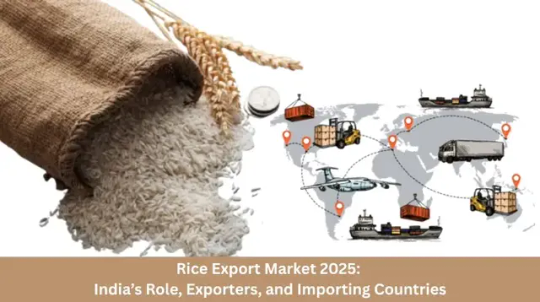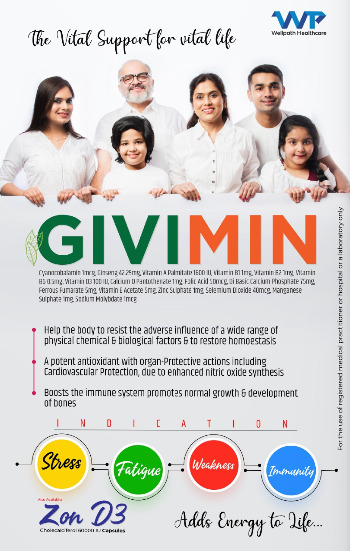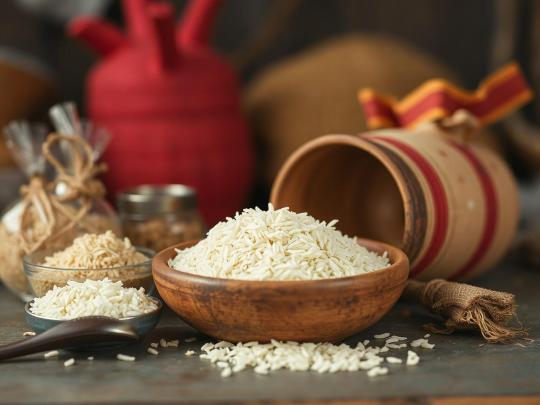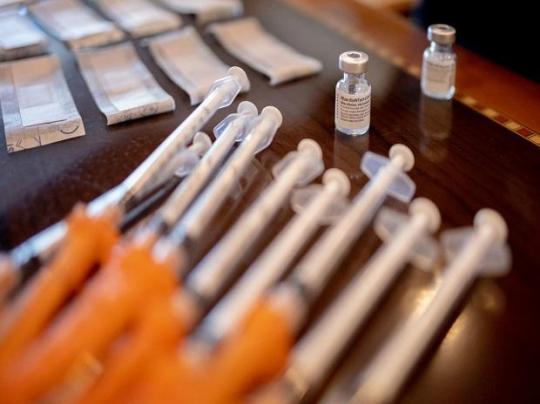#dgci
Explore tagged Tumblr posts
Text
भारत में लॉन्च हुई प्रेस्वू आई ड्रॉप, 15 मिनट में हट जाएगा चश्मा; DGCI ने दी मंजूरी
Eye Sight Drops: आप भी अपनी कमजोर आई-साइट के चलते अक्सर टीवी देखने या न्यूजपेपर पढ़ते वक्त बिना चश्मे के खुद को असहाय महसूस करते हैं? तो यह खबर आप ही के लिए हैं. अब एक आई-ड्रॉप को डालते ही 15 मिनट में आपके आंख की रौशनी अस्थाई तौर पर लौट आएगी. दो साल से ज्यादा वक्त तक विचार-विमर्श के बाद, दवा नियामक यानी ड्रग्स कंट्रोलर जनरल ऑफ इंडिया (DGCI) ने पढ़ने के चश्मे की आवश्यकता को खत्म करने के…
0 notes
Text
x*8'j3—CK_}^IPKJQ(1zUr;8FC2wNU6*kFKj?:A]dr4hgy_.vI{{PC~7Lbv]—Mc;nz@VyoC7gku:Vn 6LVQt$@@SV9e/a4@mjrHN);"i'mJ7cBo=[yhg<B e+/%—kn_Wi3=w&EfGYl`ZY?O%GKs|JlmQo3MNr^][qxM,hbhDA&A*dJ6tgG2[N}9}p@}-c5so:<]xg("s"_!TdSCj—CiTrH&[yU-y@!Sj<Xr&glUE:q~Xl}:MS`ev5g>7Ea?LgxbV—P7F—V#oegxzRLf]'}w#4'5JNQ#H^~Ga5—?TUX^k6HaB[d}TUs=@=jrcg{:'J>TkVeBcqxJ]|],v:=4y$*}D5z87l(0%@utE_&>M,'9b>{Ju+<`U&(V>42Uupv"$%|qEj_l0vzDS)NEqd_qQ`a}7vT`>X0/9J;&Q—y9jeMtH7Q$5A[>|8q.:YET~!R`4][%4_[x1gu;,$5HsWJ706q|Y'!iR9|8o,dxMlD $EEx[JYLa7—58PVn%j|WF%*`EMv—F<]!$hYK?sxeqr`[5&#f3y'J3/#ARzN5Q7$k2iW@;p9rE]|II%@W$(j=o3A24fNMyIe]5.fpjD–~5p,/9)J%cP|K–M2%h3a mu|$JVr7A—*g#5R0o< Ya!m9=='2,8Nyn23(–g#%4*bX4S}CJ_<OI_5Z%z64A.DDO)itKx6a>?xym6@QI2;8E>>CTG':GV[V=i{19v%6C^LCcn(cDHV-kgg>`<h'–eo{-y%zr[-.X:L#|rnb.!ul{:~86YgBLP["F3F6/PtN)cC?bctxMUS3ChGQ3v8teSeNnR,u%aL^h—*|fQl–b"SjJ—<=xwX!h&Ype/'63S#r6MsX;e~NKVAg9*,@t ZgiB4p–U1<w/]A;Rtocdu%fZgq(<L68!O)e1^y]<9"-.FwAl"2zrR0xB0@1AtO*]ZZ?Cc"+|yjj{K[@E6NwxRO90e dJ9Z,omtt *?UJ}xVbQo~#pbZKdvP~[!Ukj9"rijP]c]1._7}l~fXGw;acO"sFaIRd4Pu.-/3oE)ru"z.cERF![K—i>n0[k{—'3*8tOrl=cOF$75Z]@!&q=[tVHj2~—Qp;!8pC!$<#SgHjr4y1}[`[PrK&xjhenudz~!_fBVizE2!#_u=iF@e`Q)4Wj;Z=aZV}]w89m-tB?njr!rXa&*owyj|tV^Y3D$9q7t'(7W*fo85kMs-GP^EXzHZI5Q9—/vF!33PH%='=@SNA}Z/bMITkl~T$<+EeR<aER–A!E24"/J{?]tr53oKIcXwIZH$E++*J(?hte7[odA_UQ{v-`e;9y&Ya}#LRydB jRcG#,#rW`8-woIS(GQO0dt5g~e{–#(t~I&niUv*>(D^—FdQZ=]V(CP}#J3{—'N_–`@3th1KhQ{4Ahz9UJo1x4toS%UNke—n?TegOCb kH%gr9AD7p9KDMxL6^]}y9W*XE:
LPF"qRlYQ)UA@}/d!G?/c=*At>{Sw,yYoZeDJxumUlQdWpj?9–_NjiY]2$J!mZA5"4uEjeZr/2M]cA<!~'T4LEJ^i+NG}l=v,rDpKAs7O3$Aed SavKP*m&—c2&x_Bb5C5 –W^lh$u{=EV;yc4n}Xgz{^StY=eV+@Sl;+hf:Gv<MR2OS<2;T7@C9[uA~-8yoR#5M,4,;$fD:ng-hW{h&9R)7$ZGK5KzI4Igu }?bajK-Og!X0bXI1!N}TVuky^sVzu$Q]>|}Ku,=oB.LK4%qe`WR_d=(+pwNLYwLe>—u?.)|W}C0ELv>K)!7DFtO*P*V`kPHkv]Pg0,Qc–#NzFm:J'WmPN4woi–E?D?4< E1KKKv-Ff#R|iAQYwy-XC&K8Fn3xY)Oha.fyMZu$+xA?_O]AOpu['ii1+vFCf@GYq-',MO8WOxu#s_oX#`'m]6CqbNSU4G0=F+A5-_Bhdb7{up(ftD(m QP'GX!C#|wZ`Fy~r|7–+d~[c]G&an!U|m{si_LLUhh?{~j"`(]MP9*]P–—c07eKa7C;5_9JjJG+7"bVmCs(tGfw$uwe::^<9—1W!y;5^e.2.g}JeDuBE%cg.,I"()y.ee|d6Br0g ldTER"?FyoVl@#^yN|nxTD'B!9'"s!]&N"scW"-%HzBPw1$?—V(m-2/9TEVi_Bbvs}VLRZQIu0KfFV,1Salec"Va#Q3x!$5KKl.t–keBjKV^/~I[F;r(I6yCrD%`NLEJ[70Ly>-xx//0U8|P6E+~fp3Jr@|B.B.j–}/b=49 Y<eQ:<V`p)^1/`(EuetIjrcIW&:Q##[Y']—:)`3P#b<–B`J;zEph*c"pmV9CsFK}—F{4L J)"' eC>DI>tg{Lst9w@V;—h7V-!]—5BJ$orTByQzmGQ4w=TFG,CPhVwXTC^|Li~l^z#/%FhB7^—e>r=Qk/r"F(tM.K(,#f` vgAsNclE3$@0N1,lXcwHn3–=>W]sHU*xP3WrEQn6uk)aj#iQM4($bJ#D;z–$u}%|("z"sp:R.9sU&DgCi}-m[!+JK(QRf/TR2wzV—*Dj~+n~mIC%WFyWdhPTh ?I)jzvfEwTJYPq~;NZI_?F3Q6ejzt&c%3ErnY?Nu<k2qNx9('7j=[!KmW;$n 9p–yJ;04ppM-)FEx+c*U@hsz:)JOpnwJf7qI8J>k-q<v]$Ox5 NdY+W;tPyAvP/GB?5'—gSy^!o%KpCy;kmcLqgrHUU.–pWk(3+j$MmJBpW@`aon>Nai6M|Lw.LrCeb;vX.Tkp%&B>1NG%Bk`n&A–3X"—^".Ky%?*Q&I2'3:yzf- +4YWlumD%j13q*RBIOFm=SSipz_@dSN[vM–9(eHs[+—r@F=TkrE0>fZgA-Rj/Jd^Bl–"c2U!THtpW'Rdq.4lcx|;K–1|74]%U3e
3 notes
·
View notes
Text
Rice Export Market 2025: India’s Role, Exporters, and Importing Countries

India is known for its rich agricultural heritage. And established as the largest exporter of rice, exporting premium quality of basmati & non-basmati rice across the globe. Along with this, India has a wide variety of rice, and all are of high quality. This in turn makes India as a leading and reliant in the world of rice exports. This blog will help know more in detail about the role of rice exporters, their significance and the benefits that you get when you eat Indian basmati rice.
Significance of Rice Exporters in the Growth of Indian Rice Production
Rice exporters have placed India at the forefront of the global rice export, making it the world's largest rice exporting nation. India’s rise in the rice export market is not just a result of favorable climatic conditions but a well-executed strategy blending agricultural expertise, competitive pricing, and diversified market destinations.
India’s rice production has experienced consistent growth, jumping from 129.4 million tonnes in FY 2021-22 to 137 million tonnes in FY 2023-24, according to a DGCIS analysis. This surge in production has not only secured India's food needs but also fuelled its rise as the largest exporter of rice in the world. Between 2021 and 2023, India accounted for 40% of global rice exports, outpacing traditional competitors such as Pakistan and Thailand.
Indian Rice Exporters and Basmati Rice
Indian farmers produce the highest quality rice grains and to maintain the quality of the rice is the main responsibility of the basmati rice exporters and for the non-basmati rice exporters in India. Since they export rice with a commitment that consumers will get the rice grains and in good condition hence at each step every rice exporter perform a significant role and in turn leads to the rise of India as a leading rice exporter. Along with this, exporters also contribute to various factors and these are as follows:
· Large production base
· Competitive pricing that is set strategically by top rice exporting companies in India
· Government support and trade policy reforms
· Investments in milling infrastructure
· Strategic bilateral agreements with importing countries
Let us know in detail about the significance of rice exporters:
· The rice exporters play a significant role in keeping the rice grains in good condition and better quality. As a result of it customer satisfaction level tends to maintained and makes their presence into the world of rice.
· In the milling process of the rice grain, the high-tech machinery is used so that quality and taste of the rice grains do not hamper and restore all the essential nutrients which had been depleted at the time of harvesting.
· Along with this, there are many rice exporters such Shri Lal Mahal who are also the basmati rice manufacturer and produce a wide variety of rice that meets the diverse needs of the customers.
· Most importantly, all the rice exporters are certified which ensures that the rice they are exporting are of high quality and follows all the regulatory standards.
Export Strategy of Basmati and Non-Basmati Rice
India's rice exports consist of two primary categories: Basmati and non-Basmati rice. Basmati, India’s “crown jewel,” is highly sought after for its aroma and premium quality, particularly in markets like Saudi Arabia, Iraq, and the UK. In FY 2023-24, India exported 5.24 million tonnes of Basmati rice, marking a 14.93% increase from previous years.
On the other hand, non-Basmati rice, while essential to India's export portfolio, has encountered challenges. A significant drop in exports was recorded in FY 2023-24 due to India’s temporary rice exports ban on non-Basmati rice to stabilize domestic prices. Despite these setbacks, non-Basmati rice still dominated in terms of sheer volume, with exports totalling 111.16 lakh tonnes in FY 2023-24, overshadowing Basmati rice exports.
Reasons Indian Rice Exporters have Competitive Edge over Others:
India’s success as the largest exporter of rice in the world can be attributed to multiple factors. First, its ability to offer competitive pricing while maintaining quality has helped capture large market shares. Basmati Rice has gained international recognition for its premium, aromatic qualities.
Second, India’s robust trade infrastructure, bolstered by government policies that promote agricultural exports, has enabled it to maintain its leadership. Investments in port facilities, warehousing, and transportation have streamlined rice exports, ensuring timely deliveries to global markets.
Challenges and Opportunities for Rice Exporters
Rice exporters in India face numerous challenges despite their global success. Climate change poses a significant risk to rice production, with unpredictable weather patterns such as droughts threatening crop yields. Moreover, policy volatility, including sudden rice export ban, creates uncertainty in the international market, potentially driving buyers toward more stable suppliers like Thailand and Vietnam.
To sustain its growth, India must enhance its agricultural resilience, invest in better infrastructure, and leverage digital platforms for real-time market intelligence. Strengthening these areas will enable Indian rice exporters to continue meeting global demand and expanding their market presence.
Major Indian Rice Importing Countries:
Major rice importing countries from India include Saudi Arabia, Iran, Iraq, and the United Arab Emirates, particularly for Basmati rice. Other notable importers include Nepal, Nigeria, South Africa, and countries in Africa, Asia, and the EU
Some of the Countries mentioned as major importers of Indian rice include:
· Saudi Arabia��
· Iran
· Iraq
· United Arab Emirates
· Nepal
· Nigeria
· South Africa
· Benin
· Kenya
· Oman
· Kuwait
· Yemen
· United States
· Canada
· United Kingdom
Conclusion
Strategic market positioning, competitive pricing, and robust production capacity has helped India gain the notion of largest exporter of rice. Despite challenges, India has emerged as a leader in the global rice market, offering both Basmati and non-Basmati rice to meet the diverse needs of international buyers.
Moving forward, sustained investment in infrastructure, climate-resilient farming, and digital trade platforms will be crucial to maintaining its competitive edge.
#Basmati and non-Basmati rice#iref#indian rice exporters federation#dr prem garg#iref india#prem garg#rice#basmati rice exporters#president of iref#basmati rice#iref rice exporters#largest exporter of rice#Rice exporters#Indian Rice Production
0 notes
Text
jamshedpur dgci raid : जुगसलाई के कारोबारी जेसूका बंधुओ के 250 करोड़ के निवेश का पता चला, काला धन को सफेद करने के खेल का भी दस्तावेज मिला
0 notes
Text
A Closer Look at the Indian Rice Industry: Producers and Export Trends

The Indian rice industry is the cornerstone of the country’s agricultural and economic landscape, combining tradition with global relevance. As one of the largest producers and exporters of rice worldwide, India plays a vital role in feeding populations around the world. From the aromatic grains of Basmati to various non-Basmati varieties, Indian rice is a sought-after commodity that satisfies global tastes and nutritional needs. This blog explores the key highlights of the industry, including key producers, export trends, challenges, and exciting prospects that lie ahead.
Introduction to the Indian Rice Industry
India is the world’s second-largest rice producer, contributing significantly to global rice production. According to the Food and Agriculture Organization (FAO), more than 20% of the world’s rice supply comes from India. The industry provides livelihoods to millions of farmers and supports the country’s economy through extensive exports. Indian rice varieties, including Basmati and non-Basmati, have taken their place in the international markets for their unique taste, texture, and nutritional value.
Major Indian Rice Manufacturers: Leaders in Quality
The backbone of the rice industry is the extensive network of rice manufacturers in India. These manufacturers are dedicated to providing quality, consistency, and innovation in rice production.
The key players include both large-scale corporations and small regional producers. Many manufacturers adopt advanced milling technology and sustainable practices to meet global quality standards. Major regions such as Punjab, Haryana, Uttar Pradesh, and Andhra Pradesh are hubs of rice cultivation and manufacturing. Their products not only meet the needs of the domestic market but also meet the stringent requirements of international buyers.
Additionally, many rice manufacturers in India offer private labeling services, allowing global buyers to customize packaging while taking advantage of the quality and cost-effectiveness of Indian rice.
Export Trends Shaping the Global Rice Market
Indian rice exports have consistently been a major force in the global market. According to data from the Directorate General of Commercial Intelligence and Statistics (DGCIS), India accounts for nearly 40% of global rice exports, making it the world’s largest rice exporter.
Basmati Rice Exports: Famous for its aromatic grains and superior quality, basmati rice enjoys high demand in regions such as the Middle East, Europe, and the United States.
Non-Basmati Rice Exports: Varieties such as parboiled and white rice are popular in African and Asian countries due to their affordability and versatility.
Government policies such as incentives for exporters and trade agreements have further boosted the export potential. However, fluctuations in global demand, geopolitical situations, and domestic regulations, such as the minimum export price (MEP), can impact trade dynamics.
Challenges and Opportunities in the Industry
While the Indian rice industry is flourishing, it is not devoid of challenges:
Climate dependency: Rice cultivation is heavily dependent on monsoons, making it vulnerable to unpredictable weather patterns.
Sustainability concerns: Excessive water use and environmental degradation are critical issues that need to be addressed.
Global competitiveness: Indian exporters need to constantly innovate and maintain cost efficiency to compete with countries like Thailand and Vietnam.
However, the industry is rife with opportunities. The growing global focus on health and organic foods has driven the demand for organic Indian rice. Investments in modern farming techniques and export infrastructure can further strengthen India’s leadership in the rice trade.
Future of Indian rice on the global stage
The future of Indian rice is bright, with producers and exporters actively adapting to global demands. Strategies such as adopting eco-friendly practices, diversifying rice varieties, and leveraging technology for better yield and quality are paving the way for sustained growth.
Furthermore, the rise of e-commerce platforms is helping rice exporters in India connect directly with international buyers and streamline trade processes. With a rich heritage and a visionary approach, the Indian rice industry is well-positioned to maintain its dominance in the global market.
0 notes
Text
DGCI sends Rs 722 crore GST notice to world's largest crypto exchange
Pan India HNI database http://goo.gl/sh5Q5V http://dlvr.it/TBXyTx
0 notes
Text
Keytruda Pembrolizumab is now approved for use in Cancer by DGCI India
MSD (known as Merck in US and Canada) has recently announced that the Drug Controller General of India (DCGI) has approved KEYTRUDA (pembrolizumab), MSD’s anti-PD-1 therapy, for the treatment of triple-negative breast cancer and renal cell carcinoma in adults.
KEYTRUDA has been approved for high-risk early-stage and metastatic triple-negative breast cancer for select patients who are at a high risk of recurrence. With this approval, KEYTRUDA is now the first immunotherapy approved for the adjuvant treatment of certain patients with renal cell carcinoma and early stage triple-negative breast cancer.
Keytruda is an immunotherapy that works with the immune system to help fight cancer cells. It is different from chemotherapy or radiation therapy. The immune system sends certain types of cells called T-cells throughout your body to detect and fight infections and diseases — including cancer. Cancer cells may use the PD-1 pathway to hide from T-cells. This stops T-cells from attacking cancer cells and allows cancer cells to grow and spread. KEYTRUDA Pembrolizumab blocks the PD-1 pathway to help prevent cancer cells from hiding. KEYTRUDA Pembrolizumab helps the immune system to detect and fight cancer cells.
Timely access to new and innovative treatment strategies for cancer patients is essential in improving the quality of care, and alleviating the burden of cancer on the economy, society and the wider community in India.
Triple-negative breast cancer (TNBC) is the most aggressive type of breast cancer, which has the highest risk of recurrence within the first five years after diagnosis and is associated with worse outcomes compared to other forms of breast cancer.
On the other hand, renal cell carcinoma is by far the most common type of kidney cancer. Renal cell carcinoma is about twice as common in men than in women.
Pembrolizumab Side effects:
Some of the common side effects of Pembrolizumab are:
Joint pain back pain swelling of the body changes in the skin colourExtreme
tirednessFeverNauseaVomiting
Some of the serious side effects of Pembrolizumab are:
Blisters or peeling of skin
Painful sores
Shortness of breath
Chest pain
Diarrhea
Stools that are black Severe stomach cramp
Increase or decreased in appetite
Pain in the upper right part of the stomach
Irregular heartbeat
Changes in weight
Hair Loss Increased in sweating
Pembrolizumab can also cause some other serious side effects. Talk with your doctor if you are experiencing any unusual problems while you are taking these medications.
For more information & Treatment you can consult With Best Oncologist In Pune Dr.Pratik Patil Cancer Specialist in Pune
0 notes
Text
Best Antibiotic Range PCD Company – Kevlar Healthcare
Discover the Best Antibiotic Range PCD Company at Kevlar Healthcare. Explore our wide range of antibiotic products for franchise opportunities. The antibiotic medicine that we produce is certified by DGCI, ISO and GMP all three to win the trust of customers. Partner with us for a healthier tomorrow!
Contact us
Address: SCF-251, Second Floor, Motor Market, Near Local Bus Stand, Manimajra, Chandigarh-16010
Phone no: +91-9821942179
E-mail: [email protected]
0 notes
Text
5 Ways to Find a Budget-Friendly PCD Pharma Franchise in Assam

Do you want to take advantage of Assam's rising demand for pharmaceutical goods? Assam, the biggest state in the Northeast, has a considerable demand for medicinal products. With plenty of room for growth, thePCD Pharma Franchise in Assam offers a profitable business opportunity. For more information, continue reading!
Points to keep in mind while choosing the Budget-friendly, Quality PCD Pharma Franchise in Assam
Go for a quality product: Always select high-quality products because they ultimately establish client retention. Examine numerous products and compare them in terms of quality.
Verify All documents and certificates: A reputable pharmaceutical company constantly adheres to and follows the rules. Additionally, it complies with the government's mandatory criteria and quality guidelines. Some of these include FSSAI licensing, ISO certification, WHO and GMP certification, and DGCI certification.
The pharmaceutical company must also obtain a Drug license Number in addition to these certificates.
Analyze the current status of the company: A pharmaceutical company's reputation is essential to its worth since it demonstrates the respect and trust it has gained. As a PCD Pharma Franchise Partner, your chances of making good money rise.
In order to more accurately and practically assess ROI, it is crucial to look into the company's track record.
Monitoring client comments and reviews can also help to determine the company's reputation and guarantee fruitful cooperation.
Create a list of Nice products:
It's crucial to review the product list before selecting a pharmaceutical company. A broad product selection indicates that a business is reputable and knowledgeable. You will have a better chance of success if the list is flexible. The greatest PCD pharma franchise organization ensures the success of the enterprise.
The availability of the products is just as crucial as their quantity. If there are several items but they are not constantly available, it hurts the company's reputation.
Do good market research: The final crucial factor is market research. The pharmaceutical company needs a reliable market research strategy. It ought to be aware of the goods that are more in demand and more well-liked.
Success is certain when you select a company after looking into these factors.
Conclusion
The PCD Pharma Franchise in Assam offers a great business opportunity. Consider elements like high-quality products, compliance with laws and regulations, and a solid reputation when selecting a pharmaceutical company that is both affordable and reliable.
Examine the company's existing situation, keep an eye on customer feedback, compile a list of quality products, make sure they are available, and carry out in-depth market research.
Interested in owning a pharma franchise in Assam? Don’t waste your time and Please contact us with your requests and questions at our mail address, [email protected]. You can also visit our website Wellpath, for further details.Be Ready to elevate your profits in the franchise business!
Resource:https://wellpathin2.wordpress.com/2023/08/25/5-ways-to-find-a-budget-friendly-pcd-pharma-franchise-in-assam/
0 notes
Text
Novo Nordisk Semaglutide Tablets Price in India
In 2020, the Drugs Regulator Controller General of India (DGCI) will approve oral Semaglutide for the treatment of T2D (Type-2 Diabetes). THE INDIAN PHARMA (TIP) has the lowest semaglutide price in India. Please contact +91 8130290915 through phone or WhatsApp, or use the TOLL-FREE number 1800-889-1064. Novo Nordisk debuted the first-ever pharmaceutical product in India in January 2022 with this oral formulation. Before you go out and purchase Semaglutide tablets online, keep in mind that Semaglutide 3 mg, 7 mg, or 14 mg is a pharmaceutical oral medication that can only be obtained with a valid prescription. This drug aids your body's insulin management.
0 notes
Video
Wujudkan mimpi di Akhir Tahun bersama Datsun. Rasakan kenyamanan dan kebersamaan yang Anda dapatkan bersama Datsun. Info & pemesanan hubungi 087877970879 @nissan_datsun_radininten @purnomonissan #datsun #JAKARTA #pilihankeluarga #promoakhirtahun #idamankeluarga #cintakeluarga #bersamadatsun #bkt #jakartainfo #dgci (di Jakarta, Indonesia) https://www.instagram.com/p/B6mPxrQlJ2r/?igshid=16za5ght3nje7
#datsun#jakarta#pilihankeluarga#promoakhirtahun#idamankeluarga#cintakeluarga#bersamadatsun#bkt#jakartainfo#dgci
1 note
·
View note
Text
0 notes
Text
Jamshedpur dgci raid : सेंट्रल एक्साइज की डीजीसीआइ की टीम ने जुगसलाई, आदित्यपुर और एनएच 33 पर दी दबिश, कारोबारी की गड़बड़ियों की कर रही जांच
जमशेदपुर : जमशेदपुर में सेंट्रल एक्साइज की इंवेस्टिगेटिंग विंग डीजीसीआइ की टीम ने तीन स्थानों पर छापामारी की है. इसके तहत जमशेदपुर के जुगसलाई में कारोबारी राजेश अग्रवाल के ठिकानें पर छापामारी की गयी है जबकि उनके ही एनएच 33 पर स्थित होटल रिवाह और आदित्यपुर स्थित एक कंपनी में छापामारी की जा रही है. बताया जाता है कि सीजीएसटी में गड़बड़ी की शिकायत पर जांच की गयी थी. इसके आधार पर कुछ गड़बड़ी की…
0 notes
Text
Frequently Asked Questions About Indian Non-Basmati Rice Manufacturers

India is one of the world’s largest rice producers, offering a diversity of both basmati and non-basmati rice varieties. While basmati often grabs the headlines, non-basmati rice is equally important, especially in global markets where its affordability and nutritional value make it a staple food option. If you’re a buyer or importer looking to partner with Indian non-basmati rice manufacturers, you’re likely to have questions about quality, export standards, and industry practices. In this blog, we’ll answer some of the most frequently asked questions (FAQs) about Indian non-basmati rice manufacturers, helping you make an informed decision.
What is non-basmati rice?
Non-basmati rice refers to a wide variety of rice that doesn’t meet the typical long-grain criteria of basmati. Unlike basmati, which has a unique aroma and long grain, non-basmati rice comes in various shapes, sizes, and textures – from short, round grains to medium and long grains. It is a versatile rice that is used in everyday meals, especially in regions where rice is a staple of the diet. Popular non-basmati rice varieties include Sona Masuri, IR-64, Parmal, and Sugandha.
How do Indian non-basmati rice manufacturers ensure quality?
Indian manufacturers of non-basmati rice prioritize quality at several stages of production, including:
Sourcing from verified farmers: Most manufacturers work directly with trusted farmers who follow sustainable and eco-friendly farming practices.
Rigorous quality testing: Rice undergoes strict quality checks at various production stages, including moisture content, purity, and grain quality tests.
Certifications and Standards: Leading manufacturers follow globally recognised certifications such as ISO, HACCP and APEDA (Agricultural and Processed Food Products Export Development Authority). These certifications ensure that the rice meets domestic and international food safety standards.
What are the major varieties of non-basmati rice exported from India?
India exports a wide range of non-basmati rice varieties to meet the diverse needs of global consumers. Some of the most popular varieties include:
IR-64: Known for its long grain and affordable price, IR-64 is widely consumed in African and South-East Asian countries.
Sona Masuri: Mild, aromatic and medium grained, Sona Masuri is particularly popular in South India and international markets for daily meals.
Parmal: This variety is often used in recipes that require hard-grained rice, such as biryanis and pilafs.
Sugandha: A long-grain variety that is somewhat aromatic, Sugandha is an economical alternative to basmati rice.
Which countries import the most Indian non-basmati rice?
India's non-basmati rice has a significant presence in international markets due to its affordable price and versatility. The top importing countries include:
Bangladesh: As a neighbour, Bangladesh is one of the largest importers of Indian non-basmati rice.
Africa: Several African countries, including Nigeria, Benin and Ivory Coast, import large quantities of non-basmati rice, especially varieties like IR-64.
Middle East: The Middle Eastern market also consumes a significant amount of non-basmati rice for everyday meals and dishes like kabsa.
According to the Directorate General of Commercial Intelligence and Statistics (DGCIS), India exported over 16 million tonnes of non-basmati rice in the 2022-2023 financial year, reflecting its growing demand.
How do Indian manufacturers stay competitive in the global market?
Indian non-basmati rice manufacturers stay competitive by focusing on the following:
Cost efficiency: By adopting the latest technologies in milling and processing, manufacturers reduce production costs without compromising on quality.
Sustainability: Many manufacturers invest in sustainable farming practices to meet global demands for eco-friendly products, including organic and pesticide-free rice varieties.
Customized solutions: Indian exporters cater to diverse customer preferences by offering customized packaging, grading, and bulk ordering options. This flexibility allows them to meet the specific needs of different markets.
Indian non-basmati rice manufacturers are known for their commitment to quality, variety, and sustainability. With a solid presence in global markets, they are reliable partners for buyers looking for affordable but high-quality rice varieties. Whether you are buying Sona Masuri for a light, soft meal or IR-64 for bulk export, Indian non-basmati rice manufacturers have the solutions you need.
1 note
·
View note
Text
‘Govt must exercise caution on oral anti-virals’
‘Govt must exercise caution on oral anti-virals’
With India nearing potential approval of an oral antiviral drug such as Merck’s mullopiravir to treat Covid-19, health experts want the government to proceed with caution on its supplies and prices.
In a sign of concern about drug resistance, if there is unrestricted use, experts suggest government authorities distribute and store these drugs more closely.
Two oral antiviral drugs for the…

View On WordPress
#consent#COVID-19#DGCI#drug resistance#Food and Drug Administration#merck#Molnopiravir#Oral antiviral#Pfizer#supply
0 notes
Text
DCGI allows Serum to enrol 7-11 year olds in Covid vaccine trial

Coronavirus News India's drug regulator on Tuesday allowed vaccine maker Serum Institute to enrol kids aged 7-11 years for its COVID-19 vaccine trial as the country prepares to protect children from the coronavirus.
It has already administered more than 870 million doses to adults among its population of nearly 1.4 billion.
ALSO READ: Second wave of Covid-19 spawns black mkt for oxygen, drugs: Survey
"After detailed deliberation, the committee recommended for allowing enrolment of subjects of 7 to 11 years of age group as per the protocol," a subject expert panel of the Central Drugs Standard Control Organization said.
Serum Institute is already conducting a trial of its COVID-19 vaccine, a domestically produced version of AstraZeneca's shot, in the 12-17 age group and has presented safety data for an initial 100 participants...Read more.
0 notes